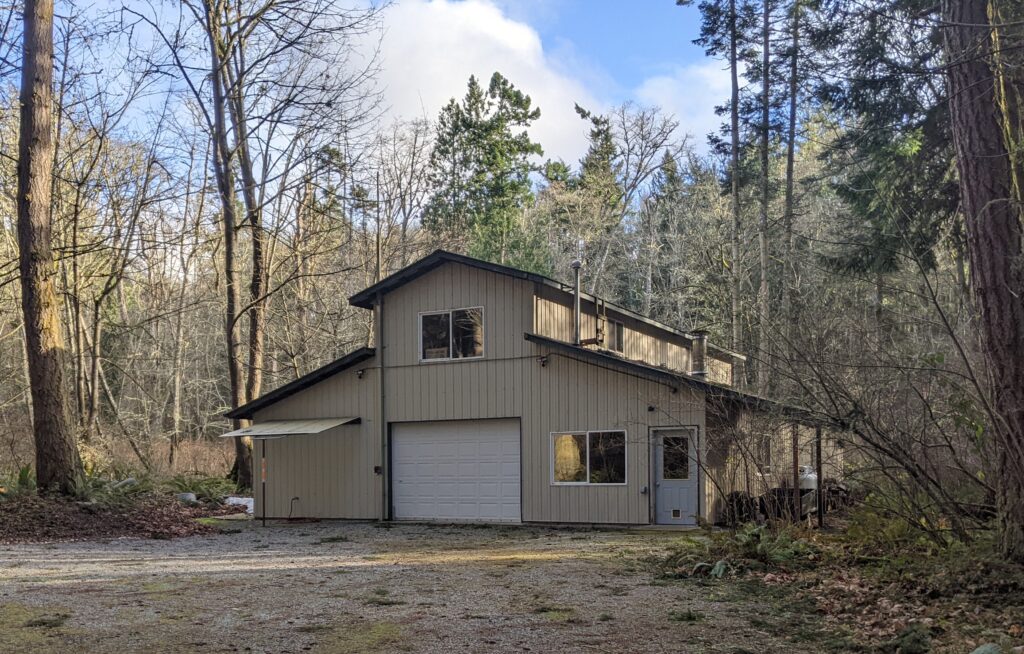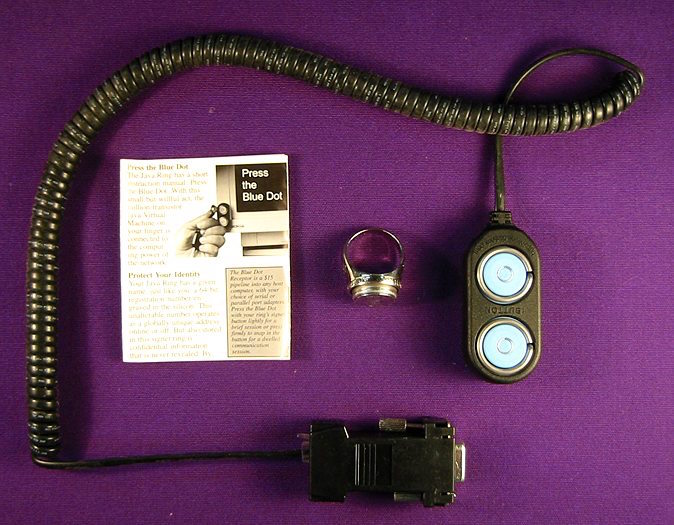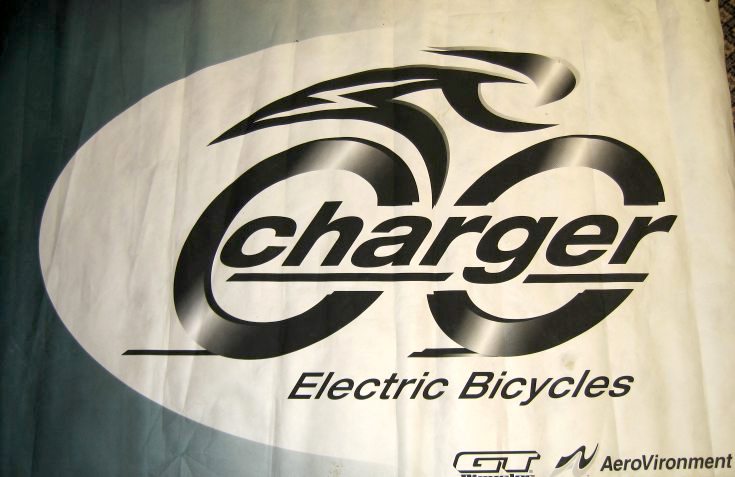
Camano Island Microship Lab Construction
by Steven K. Roberts
Microship Status Report #124
Nomadic Research Labs
Camano Island, Washington
May 7, 1998
“Nomad is on island”
Len Wanger
Photo above: the Microship lab on Camano Island, photographed on a visit 23 years later
Trench Honeymoon and Building Progress
Somehow it seemed fitting — the day after a cozy little wedding ceremony in the solarium, Lisa and I embarked on our honeymoon: grunting together in a 3-foot deep trench behind a 750-pound, thousand-dollar reel of underground power cable. Oddly, as it grew lighter, the job grew harder… until we realized (duh) that the differing diameters of the outer rim and the cable roll meant that we were dragging hundreds of feet of the stuff behind us, up hills and through mini-landslides. Richard Sousa was on hand with his Amazing Excavator, but the trench was down the middle of the only access road, with dirt piled high on both sides. So we sweated and did it the hard way, matching silver puzzle rings glinting softly on mud-encrusted hands.
We spent hours with a shovel trying to locate the power, water, and phone lines without destroying them in the process, discovering that they were installed very well (deep). The water line still awaits a tee connection, and the mythical electrician never showed to install the new meter base, so even though the trench is a dim memory, treacherous foxholes remain at house, shed, and shop.
Refilling the trench was not exactly trivial, either. After the cast-wearing electrical inspector confirmed that there was adequate spacing between the 4-0 twisted cable and the other stuff (inspectors with broken arms are good — it’s easier to initial the form than to painfully write out what’s wrong), it rained… heavily. By the time Richard refilled the 700-foot canal, it had turned to pudding; since we had to gravel the road immediately to allow builders access to the site, our anticipated 10 truckloads of gravel mysteriously grew to 17, at $145 a pop. Building bucks, apparently, are like sailboat bucks: the basic unit of currency is the $1,000 bill.
At the other end of our new freeway, now starkly different from the ancient nettle-infested double-track that once challenged the bare-legged hiker, lies The Site, cleared and leveled in a couple of days by Richard and John Deere. We chose a mostly-flat spot with the fewest trees to sacrifice, avoiding the Douglas Fir grove that’s 100 feet closer to the house. The stately trees would have paid for the site work, but they were too beautiful to kill (a sentiment that I dearly hope is shared by the various owners of the pristine woods all around us). As it was, we had to remove about 8 smaller alders and maples, cringing guiltily as they toppled under the relentless hydraulic jaws of the excavator.
Microship Lab Construction – 1998 from Steven K Roberts.
Things began to move swiftly. On the eve of our departure for the west-coast speaking tour, the folks from Pioneer Pole Buildings embedded 24 pressure treated posts in concrete to start the process; when we returned two weeks later, the whole building was framed with girts and purlins. Within days, the 12 double-glazed windows had been installed, and we were put on notice that it was time to paint the eaves… so this past weekend, we dropped everything and slapped a coat of primer and another of dark green latex on all wood that will show from the outside. Tuesday, the first of the metal roofing went up. It’s an amazingly swift construction technique, netting out at about $10 per square foot. I’m buying this whole 2-story building for what it would now cost to lease our grim windowless industrial tilt-up in Santa Clara for 14 months… and this is 30% larger and infinitely prettier.
The design has changed considerably from my description in Issue #123, by the way… it’s now a 40×56-foot “monitor barn.” The ground floor, a 4″ reinforced concrete slab, is mostly open lab space with a roll-up door in the middle of one end and an entry door at each; the boats will occupy workstands down the center with the dust-curtained spot nearest the door reserved for “dirty work.” The second floor is 14×56′ and provides a small office for me along with a media lab for Lisa and our various “clean” production projects such as publishing and photography.
By this weekend we expect to have the roof on and the concrete slab curing. Stair fabrication and internal finish work should take place next week, allowing us to finally extract the boxed-up lab from the storage facility north of Bellingham, import Bob Stuart from Canada to resume his fiberglass magic, and immediately leave again on another cross-country speaking tour that will keep us on the road until July when we can AT LAST get back to full-time work on the Microships and take those first tentative test sails in these endlessly intriguing waters.
West Coast Mothership Adventure
Lisa and I just returned from an amazingly dense 3,400-mile tour of the West Coast, focused on a keynote speaking gig at the H-P User’s Group Conference (Semiconductor Test division). Two days at the Loews Coronado Resort provided counterpoint to the four-day trek down Route 395, chosen as an alternative to the mind-numbing familiarity of I-5.
In a mini-convoy with Mike Nestor and his 5-ish kidlet Nicky enroute to Baja, linked by Motorola GMRS handhelds, we took the forgotten road south, two lanes of winding mountain/desert highway. In Oregon, a duck tracked us for about 5 miles at 50+ mph; in remote Alturas, CA, we were snowed in for a night. All along, we marveled at levels of remoteness that make even rural Camano Island seem overpopulated, then boom, the other extreme, bidding farewell to our friends and careening through Los Angeles freeways and on to San Diego — so familiar from the first two years of the Microship project (hosted at UCSD).
The HP event went well, as did an evening reception at the Aerospace Museum where we had a bonus tour of the restoration shop (Ford Trimotor, various fighters, and an original Wright engine), then it was time for a break. With flight fresh on our minds, enroute to relive old adventures on Black’s Beach, we stopped at the Torrey Pines cliffs where Lisa was captivated by the sight of a hang glider idling in the sky. I couldn’t resist, and she had no chance to panic: as a belated wedding present, I bought her a 45-minute tandem flight on the spot. Lisa writes:
“It was definitely the highlight of the trip. There I was, standing at the edge of the cliff with my arms wrapped around this stranger, wondering what the hell was going on. The next moment I was flying through the air. All thoughts immediately evaporated as I hung suspended from the wings, the cliffs receding beneath my feet, my awareness heightened to a new level. (Boom chagalacalaca..)
“My instructor was cool, a 26-year veteran of the sport, confident enough to hand over the controls after we had ridden the updrafts to Del Mar and back. I was surprised at how much force was required to turn the glider, but I managed to catch a thermal and then dive toward the ocean — swooping back up and slowly circling, feeling the substance of the air and sensing, for the first time, how a hawk must feel. Landing came too soon but so easily, the gentle stall and return to earth like awakening slowly from one of those dreams that changes your whole perspective…”
After a brief visit with my old friend Len Wanger (creator of our first Microship graphic simulations, now deep into molecular modeling), we headed back to Ellay to speak at AeroVironment. This is a geek playground of the highest order: electric cars and bicycles, teensy remote-controlled aircraft, power management systems, world-class composites engineering, and unmanned solar flying wings (the Pathfinder flew to almost 71,000 feet over Hawaii last year on sunlight alone; the new Helios, with 200-foot wingspan, can stay aloft indefinitely by using photovoltaics to conjure hydrogen from the wastewater generated by the fuel cells at night, repeating the cycle every 24 hours). If circumstances ever force employment, you can bet I’ll be knocking on their door… and meanwhile, check out this video treasure (digitized in 2021):
AeroVironment – Pathfinder 71,530-foot record flight – 1997 from Steven K Roberts.
We came away from AeroVironment with an amazing new machine lashed into the trailer next to BEHEMOTH — see below for details!
Southern California dropped astern as we motored up I-5 to our next stop — the home of Dave Wright, where I left Lisa for a couple of days while frolicking with like-spirited geeks at the Asilomar Microcomputer Workshop. A firm “no journalism allowed” tradition keeps my lips sealed on the content of the sessions, but suffice it to say that, like the venerable Hackers Conference, it was a chance to hang with a whole crowd of interesting people in which ANY random conversation is guaranteed to be interesting, informative, and challenging. In this setting, BEHEMOTH was distinctly retro-tech with its 1990-era suite of computers, but the spirit with which it was received is revealed by the applause that met my opening quip: “I’ve spent most of my career trying to avoid honest work.” Everyone who has done hard time in a cubicle knows how easily one can forget why they became an engineer…
Memorabilia from Asilomar included a Java Ring based on the Dallas Semiconductor iButton — a signet ring with 8051 CPU, 32K of ROM, 6K of lithium-backed RAM, math accelerator, and 1-pin interface to mate with the company’s “Blue Dot” connector. Designed for user authentication and crypto applications, the ring will run any Java app when docked…

One last stop. With Lisa once again at my side and the requisite visits to Halted, Dewayne Hendricks, and David Berkstresser behind us, we trekked north to Humboldt State University for the Renewable Energy Expo. I had seen an ad for this in Home Power Magazine (THE resource for off-grid power systems, photovoltaic installations, and more) and the timing was too perfect to pass up. We displayed BEHEMOTH and the Charger for a day amidst solar cookers, PV controllers, and electric cars… after staying the night at the Campus Center for Appropriate Technology, now 20 years old. (Ages ago, bicycling down the coast, I stayed there with Maggie… it’s a year-round live-in working laboratory of energy-conscious alternatives.)
We rushed back to Camano with an overnight stop in Corvallis at the home of Skip & Kelly, long-distance bicycle nomads recently back from Nepal and plotting their next adventure. The Mothership made it again…
The Charger Electric Bicycle
Ahhh, now HERE is a new toy worthy of the name. This magical device makes my legs feel like they used to, 15 years ago at the height of the Winnebiko era.
When I say “electric bicycle,” you may think of the Zap, or similar machine that goes when you push a button (and can be pedaled). Those are fun — a friend in Palo Alto added a Zap motor to a Tour Easy recumbent that I enjoyed for a couple of weeks, and it worked quite well.
But the Charger is another level beyond this — not just more power, but a qualitatively different riding experience. Most notably, if you don’t pedal, it doesn’t go. The “throttle” is in software, and reacts solely to your pedaling effort as observed by a strain gage connected to an idler on the chain. A small keypad (used also to enter a PIN before riding) lets you select one of four assist levels: half again your pedal effort, an amount equal to your pedal effort, twice that much again, or a Herculean FOUR TIMES the power you put out. The sensation is surreal: nothing happens until you start to pedal, whereupon you suddenly feel like an Olympic cyclist on an ultralight carbon frame.
With up to .5 horsepower assist that precisely tracks your own human power, there is a sense of immediacy that no other electric bicycle can match, not to mention kick-butt acceleration. The bike comes with a 7-speed internal hub (Shimano Nexus) with integral brake as well as Rock Shox Quad 5 front fork suspension and cantilever brakes, and overall construction is very clean mountain-bike technology. A second chain connects the motor to the freewheel, so electric power takes advantage of the selected gear ratio. The 23-pound power unit quickly detaches with no tools for off-bike charging, though that’s not necessary — a coil cord can be pulled out of a small compartment to opportunity-charge the 24V, 12AH gel cell battery pack wherever you are. We haven’t tested the limits yet, but range is said to vary from 18 to 30 miles depending on conditions, assist level, and riding style.
Naturally, there’s a strong temptation here to build a long low-slung trailer covered with solar panels and take this baby on cross-country tour, but we need to stay focused on the Microship. It is very refreshing, however, to have a transportation alternative around this 18-mile-long island that is more environmentally friendly (and pleasant) than a Ford F350 dually diesel 1-Ton pickup truck. Besides, I can finally keep up with my svelte, hard-muscled young bride as she whisks along sun-mottled lanes on the battered old Nishiki, hair flowing free in the breeze, derisive laughter echoing from the trees as she mocks my feeble attempts to catch up on BEHEMOTH. Now I can blow her off the road, and I feel younger already.

News, Sponsors, & Boat Names
As is our tradition in these reports, we have lots of random updates and news bits…
The house and building contents obviously inspire a certain level of paranoia, so a decent monitored security system was a priority from the beginning. We worked with American Action Security Systems in Marysville (the owner is a ham), and after the initial sticker shock, we were fortunate to have the monitoring panel and control console donated by the manufacturer, Napco Security Systems. We ran one of our three 10-conductor direct-bury cables from house to lab to integrate the two areas into a single system, and we’re working on remote browser access to allow status checking when we’re traveling.
Now that we’ve landed, we canceled our Bellingham dialup ISP account with cio.net and have signed on with whidbey dot net. The relationship is yet young, but looks interesting… more as it develops.
Here’s an interesting update — remember the Windrider, the rotomolded micro-trimaran made by Wilderness Systems? We’re using their sails and freestanding rigs on the Microships. Well, they are now producing an ~$8,000 hydrofoil called the Rave — it looks amazing. And in other trimaran news, yesterday we received our mesh tramps from Fulmar in Canada, makers of the sweet Fulmar-19 that helped set the tone and scale of this project.
In the media department, our April CQ VHF cover story ran as scheduled and was very well-produced, and we also have a technical feature in the current (June) issue of Dr. Dobbs Journal that has been generating lots of email. We’re looking forward to the piece in Outside, which should benefit from a creative photo session done here in our front yard by Rex Rystedt (now THERE’S proof that we live in a remote setting!). We just did a shoot with Keith Philpott, a photographer who is working on a book about people whose lifestyles center around bicycles. And Addison-Wesley is including extracts of the New Media and Big Byte videos into a student CDROM that accompanies the George Beekman text Computer Confluence, in which I have an essay.
The Microship control system’s high-level architecture is evolving, with a low-power Linux box at the helm of the FORTH network running Apache as a web server that talks to our various teensy control browsers (almost certainly Palm Pilots). Much more on this, hopefully, in the next issue.
The June trip to Virginia is shaping up — here’s your last chance to give us a holler if you are anywhere between Washington and Washington and would like to have an on-site appearance with BEHEMOTH! This is our final cross-country tour before the bike goes to the museum, though we will be allowed to take ‘er out for air up to 6 weeks a year.
And finally, I want to thank the folks who suggested alternative boat names! I think we’re sticking with Delta and Wye, at least for now, but some other suggestions follow….
How about i and j? Both the square root of -1, one conceptual (from math), the other practical (from engineering). Imagination is how you got where you are, right? It’s fitting for imaginary characters. No author would ever plot a book with as fantastic a tale!
Cortland Richmond — Petaluma, CA
The Iliad and The Odyssey pop to mind. Literate adventure? A siege of epic proportions on the waterways of America, hopefully without the woes and travails? But then which is who’s?
Carey Gersten — Seattle, WA
Delta and Wye? Well, in that spirit I’d suggest Be and Do, except that these are neither obscure, technical, nor particularly esthetic. This is easily fixed, however, by encrypting them respectively as Secant and Tangent. (You Be a seekant, and you Do go off on a tangent — well, not really, but it’s a nice juxtaposition.)
Vaughn Pratt — Stanford University
1) NOMAD and VOYAGER (or V-GER) Got the nomadic element nailed on this one, even for those who don’t keep up with Star Trek. For those who do, we have the technology. The nautical part is a bit of a stretch, but we do after all refer to space-faring vehicles as “ships”. 2) NEPTUNE and POSEIDON Here the sea theme is obvious. Ancient astronomers referred to the planets as wanderers, so there’s the nomadic. The only technological element I can think of is that planetary exploration is of necessity high-tech. 3) FISH and CHIPS A punny but direct way of blending the marine and the electronic. Good luck extracting a nomadic aspect.
Mike Trible — Peerlogic
(Perhaps when we add a nuclear reactor, the boats can run on fission chips? –SKR)
Hardcopy Nomadness
You know, I just realized I’ve cranked out some 275 nomadness updates of various flavors since 1983 — four book-length manuscripts worth of text spread over five epochs: Computing Across America, Miles with Maggie, Notes from the Bikelab, Nomadness Notes, and Microship Status Reports. These have always been free to our electronic subscribers, and as far as I can predict, always will be. The “soft dollars” in return are excellent compensation for the work: an amazing resource of ideas, invitations, constructive criticism, and support — as well as a way to keep our sponsors and friends updated on progress. Changing to a payment model, as so many online publications do, would destroy all this.

Selling paper, however, is another matter. Over the years we published two series of journals (6 issues of High Treknowledgy and 12 of Nomadness), compilations of the online updates with added feature content and columns. These were fun and sorta profitable, but expensive and time-consuming to produce, especially with any expectation of a quarterly publication schedule (except perhaps “quarter-decade”). So we started producing stand-alone monographs and found that focused topics (like how to build a video turret or tales of the Fulmar epoch) sell well and don’t really go out of date.

That still leaves a vacuum in the news department, however, and if we abandon all pretense of fancy production it’s easy to fill. From now on, we will make hardcopies of these Microship tech/adventure reports available by subscription. Obviously, if you’re reading this on the Net you are unlikely to pay for a printout of the same text, but if you know anyone who would enjoy getting these postings via snail mail or just want to incrementally support the project, here’s a way to do it. Individual issues (including back issues) are $3 each postpaid in the USA; $25 buys the next ten regardless of elapsed time or the length of each. At the moment, production style is vanilla — just a laser print of the text from Word — but I won’t rule out embedding images if it turns out to be painless (or if someone else wants to do the layout work).
That’s all for now — by issue #125, we should be back to work on BOATS!


You must be logged in to post a comment.